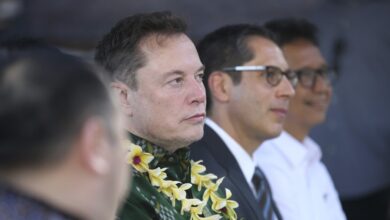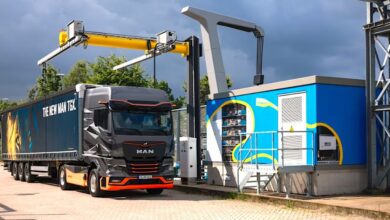Chinese EV Stocks Tank on Tariff Drama

Last week, the CEO of BYD Company Ltd (OTCBB: BYDDY) Wang Chuanfu scoffed at Western nations adopting a protectionist stance against China’s clean energy sector, suggesting they are “afraid” of Chinese EVs, “If you are not strong enough, they will not be afraid of you,” he declared. Well, it’s probably China’s turn to be afraid. Stocks of leading electric vehicle manufacturers are selling off after Turkey imposed 40% tariffs on EV imports from the Middle Kingdom. NIO Inc. (NYSE:NIO) was down 5.6% in Tuesday’s intraday session; XPeng Inc.(NASDAQ:XPEV) lost 5.1%, Li Auto (NASDAQ:LI) fell 2.7% while BYD Company Ltd (OTCBB: BYDDY) gained 1.4%. All four stocks have 8cratered in double-digits over the past 12 months with NIO having returned -46.8%, XPEV -23.7%, LI -39.1% and BYDDY -12.2%.
The additional tariff will be set at a minimum of $7,000 per vehicle, and go into effect from July 7, a presidential decision published in the country’s Official Gazette has revealed. Like many of its Western peers, Istanbul is worried about the influx of cheaper Chinese EVs, with the tariff meant to protect its domestic automakers. From July, the European Union is set to impose additional tariffs of up to 25% on imports of China-made electric vehicles, and on top of this President Biden announced a hike in tariffs on a variety of Chinese imports, with the tax rate on imported Chinese EVs rising to 102.5% this year, up from 27.5% previously.”American workers can outwork and outcompete anyone as long as the competition is fair. But for too long, it hasn’t been fair. For years, the Chinese government has poured state money into Chinese companies … it’s not competition, it’s cheating,” Biden said after unveiling the tariffs.
The tariff storm that has hit China’s EV sector was probably expected. In China, many of the most popular EVs–including BYD’s Seagull–sell for around $12,000–and some budget models cost less than the average e-bike. The Seagull would likely cost ~$25,000 in the U.S. if BYD was allowed to sell it here; in contrast, Tesla Inc.’s (NASDAQ:TSLA) popular Model 3 starts at $40,630 and goes up to $54,630 depending on the trim and options. To be fair, some of China’s huge competitive advantage in the EV arena can be chalked up to a healthy dose of ‘cheating’ as Biden put it, including abuses of intellectual property and currency manipulations. However, ample government support in the form of incentives and subsidies has probably played an even bigger role. Back in March, U.S. Treasury Secretary Janet Yellen announced that she intends to warn Beijing that its national underwriting for energy and other companies is creating oversupply and distorting global markets when she pays the country an official visit.
“I intend to talk to the Chinese when I visit about overcapacity in some of these industries, and make sure that they understand the undesirable impact that this is having–flooding the market with cheap goods- -on the United States, but also in many of our closest allies, Yellen said in a speech in Norcross, Georgia.
That said, some analysts have argued that China is so far ahead in the game that these tariffs will do little to slow down its momentum.
“But the Chinese manufacturers are so efficient, are so ahead of the curve, that tariffs like this – I don’t think will impact too much the pricing here. They will still be more competitive than their EU counterparts,” Anthony Sassine, senior investment strategist at KraneShares, told CNBC’s “Squawk Box Asia” on Tuesday.
Whether Chinese EVs will continue to dominate global markets after these tariffs take effect remains to be seen. However, EV manufacturers in general can take some comfort in predictions that their vehicles could start going mainstream sooner rather than later. To wit, Gartner has predicted that EVs will be cheaper to produce than ICE vehicles of the same size in three short years, thanks in large part to improvements in manufacturing methods with production costs dropping faster than battery costs.
“New OEM incumbents want to heavily redefine the status quo in automotive. They brought new innovations that simplify production costs such as centralized vehicle architecture or the introduction of gigacastings that help reduce manufacturing cost and assembly time, which legacy automakers had no choice to adopt to survive,” Pedro Pacheco, vice president of research at Gartner, has said.
By Alex Kimani for Oilprice.com
More Top Reads From Oilprice.com:



